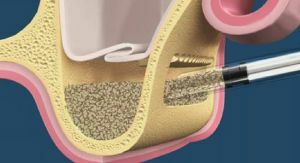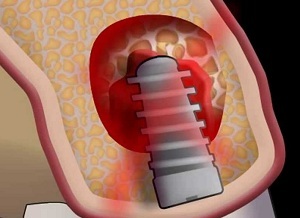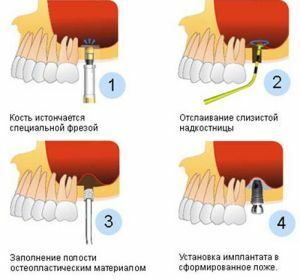 Sinus-lifting, or the second term name in dental surgery - augmentation( augmentatio), is translated from the Latin language as increased, amplified. Augmentation is the process of replacing or restoring the jawbone. Such a procedure was actively practiced in the XIX century by Walter and Walfform.
Sinus-lifting, or the second term name in dental surgery - augmentation( augmentatio), is translated from the Latin language as increased, amplified. Augmentation is the process of replacing or restoring the jawbone. Such a procedure was actively practiced in the XIX century by Walter and Walfform.
In the Russian Federation, the first bone transplantation operations were performed by doctors Dyakonov and Deshin. The procedure is rather complicated, therefore it requires special equipment and a full study of the patient's anamnesis.
Contents
- When applied procedure
- Contraindications to operation
- Possible variations
- Recovery stages
- Possible complications
When procedure
is used Most often the augmentation is performed with atrophy of the jaw bones. Also, this intervention is used in periodontitis, to restore the width or thickness of keratinized gums.
As practice shows, the main advantage of augmentation is the ability to deliver a long dental implant to the patient. Due to this, it is possible to provide the necessary load, namely the occlusal, directly to the lateral parts of the jaw.
Contraindications to operation
Procedure is not carried out: 
- during exacerbation of chronic sinusitis;
- if the patient has a tumor in the oral cavity, directly in the upper jaw area;
- for pathologies that are associated with blood coagulability;
- has an anamnesis of tuberculosis;
- type I diabetes mellitus.
It should be noted that physicians distinguish and relative contraindications. These include: inflammation in the oral cavity, the patient's caries, as well as the period of pregnancy and lactation.
Possible variations of
It should be noted that there are several types of restorative techniques. The first type is called closed, and the second type is open. In the first case, the procedure is performed when the height of the bone is in the projection of the maxillary sinuses. The height of the bone should be at least 8 millimeters. If this height is not enough, an open surgery is performed, in which stronger anesthetics are used.
The procedure can be carried out using a variety of materials, it all depends on the degree of complexity of the problem that the patient has.
Autotransplantation implies the build-up of the patient's own bone tissue. Before surgery, the patient has a bone tissue from the chin or hard skull. After that, your own bone tissue is transplanted into the necessary area of damage.
This kind of procedure reduces the risk of infection and improves the healing process.
The second type is also the building up of donor bone material, but only taken from another person. Such material requires additional processing. The disadvantage of this type of operation is the slow engraftment of the material.
The third method is practically not used, since with xenotransplantation, the biomaterial is taken from the animal.
Recovery stages
 The main stage in the preparation for the operation is a complete study and diagnosis of the problem. Therefore, before the procedure, doctors prescribe the delivery of tests, and also using an X-ray, examine the mouth to identify the tumor.
The main stage in the preparation for the operation is a complete study and diagnosis of the problem. Therefore, before the procedure, doctors prescribe the delivery of tests, and also using an X-ray, examine the mouth to identify the tumor.
The operation is performed under conditions of surgical dentistry and requires complete sterility.
The patient is seated in a dental chair and injected with anesthesia. Anesthetic preparation is selected individually, it all depends on the patient's anamnesis.
As soon as anesthesia works, the doctor inserts a special brace to fix the jaw. Using a surgical scalpel, a small incision is made, as a result of which a bone window opens.
The cyst is then removed and only then the cavity is filled with biomaterial. At the end of the operation, the cosmetic suture is adjusted.
The main danger is the violation of the integrity of the mucosa, since there is a risk of getting into the wound infection.
In case of complications, a strong inflammatory process develops, bleeding and soreness develops, in rare cases, donor material falls out.
In this case, doctors prescribe anti-inflammatory therapy, however, when a fistula appears, surgical sanitation is shown. As soon as the inflammation subsides, you can perform a second operation for bone graft.
